
Recent Blog Posts
December 3, 2010
Biomechanics of the Squat
My article, Squatting kinematics and kinetics and their application to exercise performance has just been published in the current issue of the Journal of Strength and Conditioning Research. The article is an extensive review of the literature on the biomechanics of the squat in depth, and explores its relevance to strength and muscle development. Here are the conclusions of the paper based on a summation of research:
1. Squat depth should be consistent with the goals and abilities of the individual. Because peak patellofemoral compressive forces occur at or near maximum knee flexion, those with patellofemoral disorders should avoid squatting at high flexion angles. For those with existing injury or previous reconstruction of the PCL, it is best to restrict flexion to 50° to 60° so that posterior shear is minimized. Quadriceps development is maximized by squatting to parallel, with no additional activity seen at higher flexion angles. Hip extensor moments increase with increasing squat depth, so full squats may be beneficial for those seeking to maximize strength of the hip musculature.
2. Speed of movement should be based on goal-oriented specificity to the force-velocity curve. However, given that speed of movement has been shown to significantly increase both compression and shear forces, there is a tradeoff between optimal transfer of performance and risk of injury. This is especially true on the eccentric aspect of the move where rapid deceleration generates exceedingly high joint forces at the knee. Failure to control descent can result in the ballistic contact between the hamstrings and calf muscles, which can cause a dislocating effect on the knee ligaments. Therefore, unless athletic goals specifically dictate otherwise, squat descent should always be executed in a controlled fashion, with a 2 to 3 second eccentric tempo considered a general guideline.
3. A wider stance squat is preferable for those seeking optimal development of the hip adductors and hip extensors, whereas a closer stance is more appropriate for targeting development of the gastrocnemius. Stance can also be varied to alter joint-related forces: a narrow stance helps to minimize patellofemoral and tibiofemoral compression while a wider stance results in less forward knee translation and thus reduces shear.
4. Low bar back squats tend to produce greater hip extensor torque and less knee extensor torque compared with high bar back squats. However, the magnitude of forces for both movements are well tolerated by the associated joint structures, making either position suitable for the majority of lifters. The front squat produces significantly lower knee compression and lumbar stress in comparison with back squats, making it a viable alternative for those suffering from various knee and back ailments. Front squats also can be particularly beneficial for those competing in weight lifting events because it is an essential component in performance of the clean.
5. Fatigue can have a deleterious effect on squatting technique, potentially leading to knee instability and increased lumbar shear. If the lifter opts to squat to momentary muscular failure, it is advisable to have a spotter to ensure safety.
In addition to the aforementioned joint-specific recommendations, some joint-specific recommendations can be made as to squat-related performance variables.
Ankle Joint: Significant strength and mobility is required at the ankle for proper squat performance. Feet should be positioned in a comfortable stance that allows the knees to move in line with the toes. Because the feet are outwardly rotated approximately 7° in anatomic position, this can be considered a good starting point to ensure proper patellar tracking. If the lifter’s heels rise off the floor during the eccentric phase of movement, efforts should be made to improve flexibility around the talocrural and subtalar joints. Orthotics can be worn to help correct joint imbalances and misalignment. If necessary, a barbell plate or other flat object can be placed underneath the heels to aid in stability.
Knee Joint: Given the fact that shear forces are increased as the knees move past the toes during the downward phase of the squat, attempts should be made to avoid significant forward knee translation on descent. However, this should not be done at the expense of compromising form at the hips and spine, which can place the lumbar region in a biomechanically disadvantageous position and significantly increase spinal shear. To reduce tibiofemoral and patellofemoral moments, the lifter should sit back into the squat during descent and resist pushing the knees forward. There should be no varus or valgus motion throughout exercise performance.
Hip Joint: Given the close relationship between movement at the hips, pelvis, and lumbar spine during dynamic squatting, hip mobility is extremely important for proper squat performance, especially at higher flexion angles. Poor joint mobility can lead to greater forward lean and thus increased spinal shear. Although some lifters attempt to increase hip flexion by using posterior pelvic movement during squat descent, this can heighten lumbar stress and is thus not advisable. Flexibility training specific to the hip musculature can help to increase hip mobility and facilitate better squat performance.
Spine: The spine is the most vulnerable of the joints during squatting. Because the lumbar spine is better able to handle compressive force than shear, a normal lordotic curve should be maintained in this region, with the spinal column held rigid throughout the movement. Proper spinal alignment is facilitated by maintaining a straight ahead or upward gaze, which reduces the tendency for unwanted flexion. Although some forward lean is sometimes necessary to maintain stability especially when performing deep squats, attempts should be made to keep the trunk as upright as possible to minimize shear. No lateral movement should take place at any time.
Stay Fit!
Brad
December 2, 2010
Functional Fitness Article
My friend and colleague, Mike Bates (who is owner/director of the terrific training facility, Refine Fitness), did a nice job summarizing some of my findings on functional training in a recent article appearing in the Windsor Star newspaper. Below is a link to the article. Happy reading!
Find out what works best for you
Stay Fit!
Brad
November 18, 2010
Can You Target the Lower Abs?
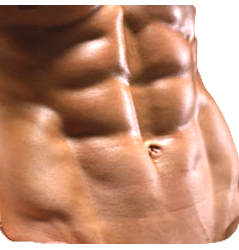
One of the biggest fitness controversies concerns whether you can target the lower portion of the abdominal muscles. Bret Contreras, has an excellent blog post on the topic, titled ABC (Ask Bret Contreras) – Is it Possible to Isolate the Upper or Lower Abs?. Bret cites the science as well as the practical applications for training in a very balanced way. It’s highly recommended reading.
In support of Bret’s conclusions, the body of research does suggest that it is possible to target the lower abdominal region. Realize that there is a physiological basis for activation of selective aspects of the abs. Specifically, the rectus abdominis is partitioned by the tendinous intersections (this is what gives the abs the “six pack” appearance). What’s more, the upper and lower abs are innervated by different nerves, providing a mechanism for selective activation.
As Bret notes, the research itself is rather mixed on the topic, with some studies showing an ability to target the lower abs and some not. However, a closer look at the methodology and results of these studies does indicate that targeting the lower abs is, in fact, possible. One of the best studies on the subject was performed by Sarti and colleagues (1). The researchers divided participants into two groups–a high physical activity group that had trained seriously for at least 1.5 hours, 3 days a week for 3 years, and a low physical activity group that did not meet this criterion. Each of these two groups performed a crunch (intended to target the upper abs) and a reverse crunch (intended to target the lower abs). Electromyograph (EMG) readings were obtained to determine muscle activity in the upper vs. lower abdominal region. Exercise performance was monitored by fitness professionals and the groups were then further subdivided into correct and incorrect performers based on the participant’s ability to perform the exercises properly (in this case, correct performance of the reverse crunch was dependent on the participant being able to initiate a posterior pelvic tilt). The interesting finding of this study was that only the physically active participants deemed “correct performers” were able to target their lower abs!
The take home message here is that you must initiate a posterior pelvic tilt if you want to increase activation of the lower abdominal musculature. This is accomplished by lifting only from the butt so that you bring your pelvis up towards your belly button–standard leg raises are primarily a hip flexor exercise and will only work your abs statically without targeting the lower aspect of the abs (the abs play a stabilizing role in this movement). Develop a mind-to-muscle connection so that when you lift your pelvis, you forcefully contract the lower abdominal segments. Provided you perform the movement correctly, you should be able to elicit greater development in the lower abdominal region.
Stay Fit!
Brad
1) Sarti MA, Monfort M, Fuster MA, Villaplana LA. Muscle activity in upper and lower rectus abdominus during abdominal exercises. Arch Phys Med Rehabil. 1996 Dec;77(12):1293-7.
November 17, 2010
Is Functional Training Really Functional?
The term “functional fitness training” is one of the most hyped trends in the field of exercise. But what does the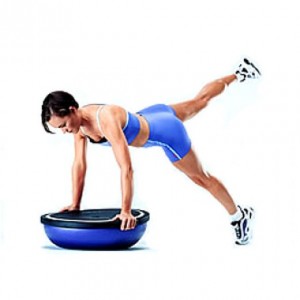 term “functional fitness training” really mean? I recently wrote an article for ASCM Certified Newsletter titled, “Is Functional Training Really Functional? that challenged many of the concepts promoted by fitness professionals as to how to achieve fitness that is functional. You can read the article at the link below: it begins on page 5.
term “functional fitness training” really mean? I recently wrote an article for ASCM Certified Newsletter titled, “Is Functional Training Really Functional? that challenged many of the concepts promoted by fitness professionals as to how to achieve fitness that is functional. You can read the article at the link below: it begins on page 5.
Is Functional Training Really Functional?
Here are the key points summing up the take-home message of the article.
1) For all practical purposes, there is no such thing as a “non-functional” exercise. Rather, the functional transfer of exercise exists on a continuum, where some exercises are more functional than others based on the needs of a particular functional task. I’ve coined this the “functional fitness continuum.”
2) The primary reason that most people lose functional capacity is due to a loss of muscle tissue. Therefore, simply increasing a person’s strength will promote better functional capacity. This can be achieved through any type of resistance training, whether it be machines, cables, body weight or free weights. Remember that strength is highly correlated with muscle cross sectional area (i.e. the size of the muscle), so increasing muscle development will generally promote greater functional capabilities in most people.
3) To optimize the training response from a functional standpoint, it is necessary to take heed of the principle of specificity. Simply stated, this means that the closer the training replicates the movements a person wants to accomplish, the better the transfer to performance of the movement. Thus, while a machine will promote functional improvements, free weights will tend to promote better results because they more closely approximate the way functional tasks are performed.
4) Unstable surface training is generally inferior to stable surface training in terms of promoting functional fitness. Realize that the vast majority of activities of daily living are performed in a stable environment. Thus, the concept of unstable surface training violates the principle of specificity; better transfer necessarily will be achieved by performing the exercises on stable surfaces. What’s more, stable surface training increases strength to a greater degree than comparable exercises performed on unstable surfaces, providing yet another advantage from a functional standpoint.
I will be co-presenting a workshop on the “Functional Fitness Continuum” (with my colleague Jay Dawes) at the upcoming NSCA Personal Trainer Conference this March at Bally’s Hotel and Casino in Las Vegas. Hope to see you there!
Feel free to send along any comments you have on the topic. I’d love to hear your thoughts.
Stay Fit!
Brad
November 9, 2010
T-Nation Article on Arm Training
For those seeking better arm development, I co-authored an article on T-Nation with Bret Contreras and Tony Gentilcore. You can read the article at the following link:
3 Total Body Programs for Big Arms
Stay Fit!
Brad
October 17, 2010
The Science of Biceps Training
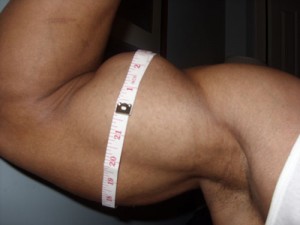
Want to improve the development of your biceps? If so, it’s necessary to understand a little applied anatomy. The biceps brachii is a two-headed muscle, comprised of the short head (which sits on the inner portion of the upper arm) and the long head (which sits on the outer portion of the upper arm). The long head of the muscle crosses the glenohumeral joint at the shoulder while the short attaches at the coracoid process on the front aspect of the scapula (shoulder blade). Why is this significant? Well, during performance of exercises where the upper arm is held behind the body, the long head is placed in a greater position of stretch compared to the short head and therefore is able to generate maximal force. Conversely, during performance of movements where the upper arm is held out in front of the body, the long head is slackened to a greater degree (a phenomenon called active insufficiency) and therefore force production is compromised.
Given that the long head of the biceps also has a secondary role in abduction of the shoulder, it also will become actively insufficient when performing curling movements where the the arms are raised out to the sides (i.e. as if performing a biceps pose in bodybuilding). Thus, the short head will be worked to a greater extent in these exercises.
What’s more, evidence shows that aspects of the biceps are “partitioned”, with both the long and short heads comprised of individual architectural compartments that are innervated by private branches of the primary nerves. EMG studies of the long head of the biceps brachii show that muscle fibers in the lateral portion of the muscle are recruited for elbow flexion, fibers in the medial aspect are recruited for supination, and centrally located fibers are recruited for non-linear combinations of flexion and supination. Furthermore, the short head appears to be more active in the latter part of an arm curl (i.e. greater elbow flexion) while the long head is more active in the early phase.
So what does all this mean in terms of muscle development? It means that you have the ability to target either the short head or the long head by varying arm angle! Exercises such as incline curls and drag curls (where the upper arm is positioned behind the torso) place more emphasis on the long head of the biceps. Alternatively, exercises such as preacher curls and concentration curls (where the upper arm is positioned in front of the torso) work more in the short head, as do exercises such as cross cable curls on a high pulley apparatus. “Traditional” barbell and dumbbell curls (where the upper arm rests at the sides) will place a fairly equal amount of stress on both heads of the biceps. Performing supinated curls as well as hammer curls will ensure complete activation of the fibers in the long head.
This now begs question as to how you should apply this information. Unless there is a visible discrepancy between the two heads of the muscle (which is unlikely and difficult to assess), your best bet is to vary your choice of exercises. When performing a split routine, a good approach is to choose one movement from each group and then perform two to three sets per exercise each session. In this way, you ensure that all available muscle fibers are optimally worked over time, thereby promoting complete and symmetrical development of the muscle. Keep total sets to no more than about nine or so per workout to ensure you don’t overwork the biceps–they are a small muscle and are involved as synergists in many upper body exercises. Also, make sure to train through a full range of motion so that both heads are worked to their fullest extent.
Stay Fit!
Brad
October 2, 2010
What Causes Muscles to Quiver When Lifting
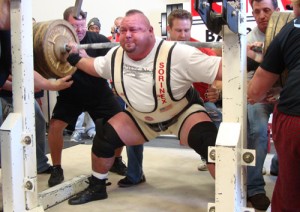 I’m commonly asked why muscles tend to quiver on the last few reps of an intense strength training set. You know, that shakiness you get in your arms or legs while struggling to finish off a set of presses or squats. Actually, the phenomenon is caused by your golgi tendon reflex (GTR). Here’s how it works. Within muscles are proprioceptors (i.e. sensors) called golgi tendon organs (located at the junction of a muscle and its tendon). Their purpose is to monitor neuromuscular overload and hence protect muscles from ripping or tearing from bone. They accomplish this task by sending an impulse to your muscles that causes them to relax when there is a perceived threat to their safety.
I’m commonly asked why muscles tend to quiver on the last few reps of an intense strength training set. You know, that shakiness you get in your arms or legs while struggling to finish off a set of presses or squats. Actually, the phenomenon is caused by your golgi tendon reflex (GTR). Here’s how it works. Within muscles are proprioceptors (i.e. sensors) called golgi tendon organs (located at the junction of a muscle and its tendon). Their purpose is to monitor neuromuscular overload and hence protect muscles from ripping or tearing from bone. They accomplish this task by sending an impulse to your muscles that causes them to relax when there is a perceived threat to their safety.
But while such proprioceptors are beneficial if, say, you try to lift your refrigerator in a moment of unbridled impulse, from a training perspective it can hamper your efforts. The issue with the GTR is that it in certain instances, such as during intense weight training, it tends to kick in long before there is an actual safety threat. So while your quads are pushing to finish off that last rep of squats, your golgi tendon organs are sending impulses for them to relax, causing that awkward quivering sensation.
The good news is that the GTR is nothing to be concerned about. Assuming you are lifting within your own capabilities, there is no danger to your muscles in trying to push past ‘the shake’. For advanced trainees, doing so may be necessary to reach true muscular fatigue and thus optimize body composition. Just make sure that you have a contingency plan in case your muscles completely give out (read: spotter, power rack, etc)—you certainly don’t want to get stuck under the weight of a loaded barbell at the end of an intense set.
Stay Fit!
Brad
September 19, 2010
Review Article to Be Published in JSCR
I just received word that my review paper, “The Mechanisms of Muscle Hypertrophy and Their Application to Resistance Training” will be published in the October issue of the Journal of Strength and Conditioning Research. The abstract has been indexed in Medline at the link below:
The Mechanisms of Muscle Hypertrophy and Their Application to Resistance Training
More to come on this soon…
Stay Fit!
Brad
August 22, 2010
Is It Better to Work Out in the Morning?
I continue to hear various fitness pros profess that it’s best to work out first thing in the morning. I’ve heard some go as far as to state that if you’re not in the gym early you’ll miss out on half the benefits of exercise. Unfortunately, none of these “experts” ever provide a shred of peer-reviewed evidence to support their claims.

Fact is, research has failed to show any superiority for working out at a particular time of the day, be it morning, afternoon, or night. A recent study in the Journal of Strength and Conditioning Research reinforces this fact. Subjects were randomly assigned to either a morning or afternoon training group. After 10 weeks, no significant differences were found in muscle development between the groups. Interestingly, the afternoon group actually showed slightly better results, but the findings did not reach statistical significance.
So what’s the real scoop? For all practical purposes, the most important consideration about when to train is to pick a time when you will be at your best. If you’re a morning person, then an early workout will optimize your results. But if you do better in the evening, you’ll only end up sleepwalking through a morning workout. Certainly this will be counterproductive to achieving your best gains. It’s simply common sense that you’d be best off training later in the day.
Bottom line: Don’t be swayed by the hype about morning workouts being best. Let your biorhythms dictate when you work out. Remember, the effort that you put into training will dictate what you get out of it.
Stay Fit!
Brad
Sedliak M, Finni T, Cheng S, Lind M, Häkkinen K. (2009). Effect of time-of-day-specific strength training on muscular hypertrophy in men. J Strength Cond Res. 23(9):2451-7.
July 27, 2010
Sitting Increases Risk of Mortality…Even With Exercise?
A recent study published in the American Journal of Epidemiology (1) reported that those who sit for long periods of time each day (determined as greater than 6 hours a day) are at a significantly increased risk of mortality compared to those who don’t (determined as less than 3 hours a day). Not surprised? Understandable. After all, everyone knows that inactivity increases the risk of disease and death, right? Well, the interesting finding associated with this study was that sitting increased the risk of mortality even in those who exercise! Science Daily did a nice job summing up the findings of the study. You can read the article here: More Time Spent Sitting Linked to Higher Risk of Death

At this time, I have only been able to view the abstract of the study, and without reading the exact methodologies employed by the researchers it’s difficult for me to offer an informed opinion. However, based on available information, it would seem some caution needs to be observed before taking the study’s results at face value.
First, the study used a questionnaire format to assess exercise info. While this is a logical approach given the large sample size, it does raise questions as to the validity of the conclusions. People notoriously tend to overestimate their physical activity levels when filling out questionnaires (2). If true here, this could have skewed results with respect to the exercise group. At the very least, additional studies need to be conducted to confirm the findings.
Also, it is unclear whether the authors differentiated between training intensities, exercise volume, and/or exercise modalities of the subjects. If not, there would have been no distinction made between those whose primary form of exercise consisted of walking slowly versus those who intensely lifted weights or performed high-intensity interval training. Suffice to say, these factors could conceivably have a huge impact on morbidity and mortality.
I hope to be able to get my hands on the entire study soon and review the particulars of the research protocol. After doing so I will post a follow up with additional thoughts on the subject. In the meantime, it is certainly clear that it’s better to be active than to sit for extended time periods. It’s also clear that performing physical activity of any kind helps to decrease mortality risk, and a majority of studies show that this risk is further reduced with more vigorous exercise. Bottom line: Keeping active and sitting less is always a good strategy. More to come so stay tuned…
Stay Fit!
Brad
1) Patel, A.V., Bernstein, L., Deka, A., Feigelson, H.S., Campbell, P.T., Gapstur, S.M., Colditz, G.A., & Thun, M.J. (2010). Leisure Time Spent Sitting in Relation to Total Mortality in a Prospective Cohort of US Adults. American Journal of Epidemiology, DOI: 10.1093/aje/kwq155
2) Fogelholm M, Malmberg J, Suni J, Santtila M, Kyröläinen H, Mäntysaari M, Oja P. (2006). International Physical Activity Questionnaire: Validity against fitness. Med Sci Sports Exerc. 38(4):753-60.




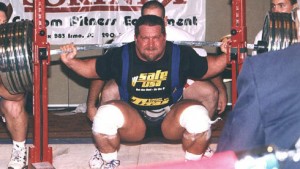

 Entries (RSS)
Entries (RSS)



